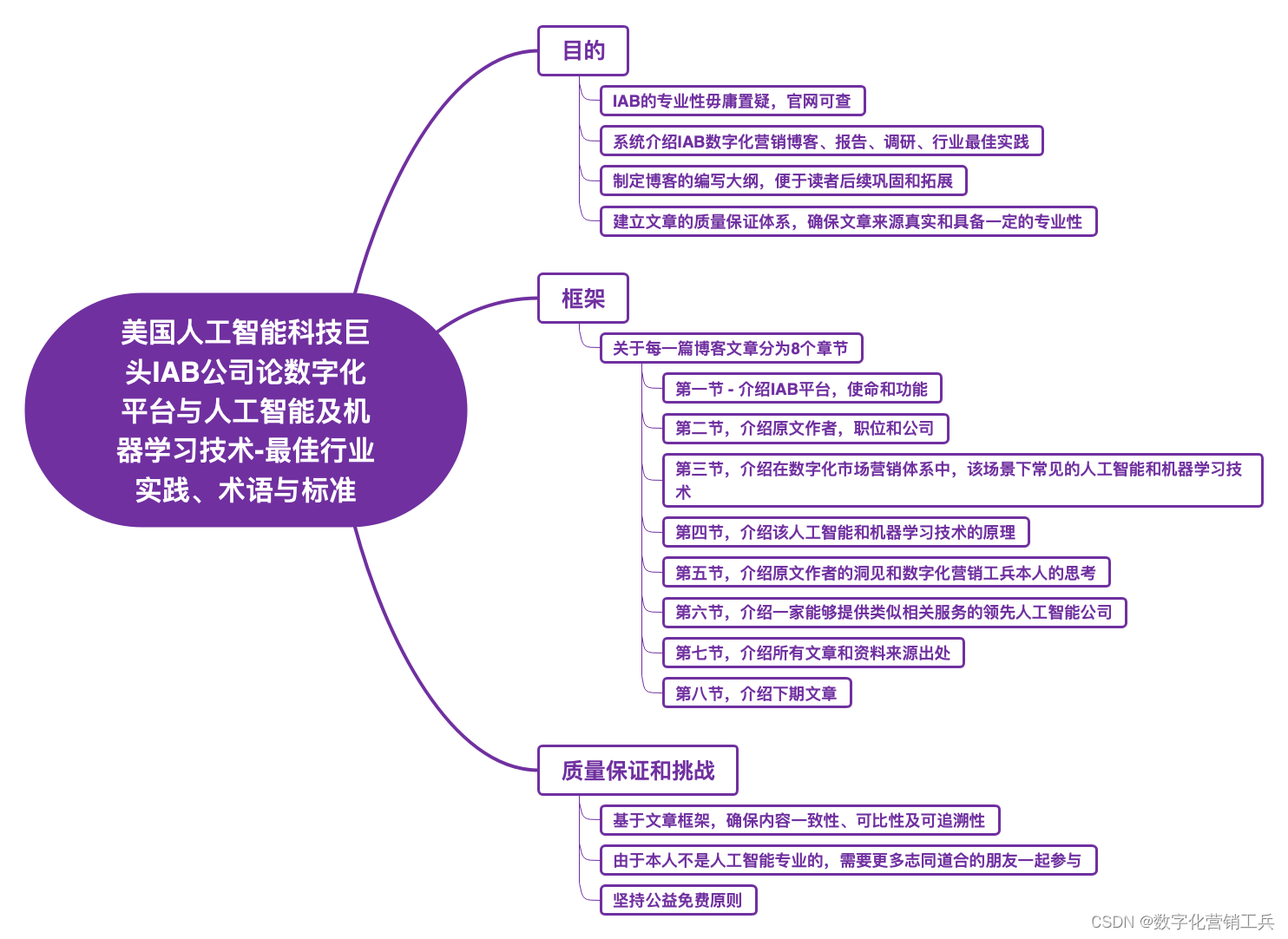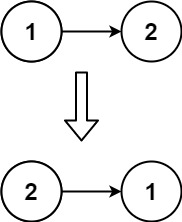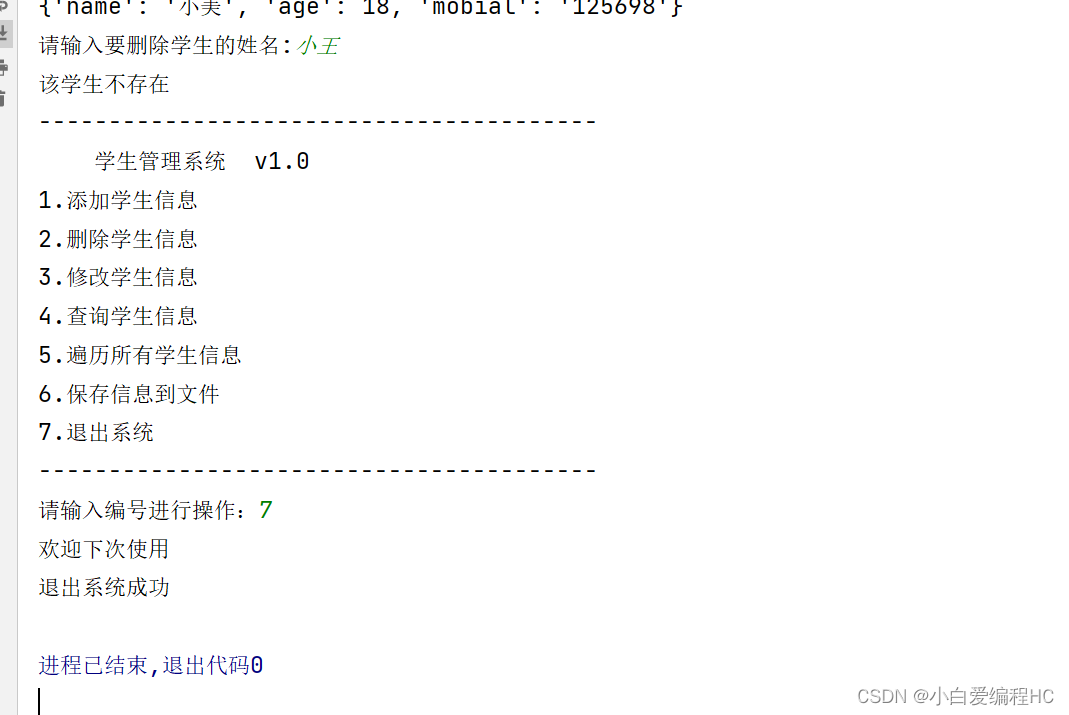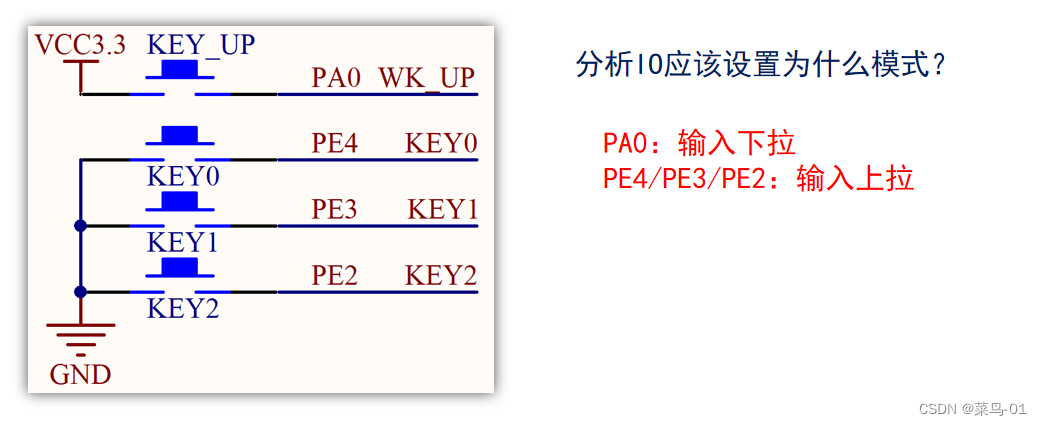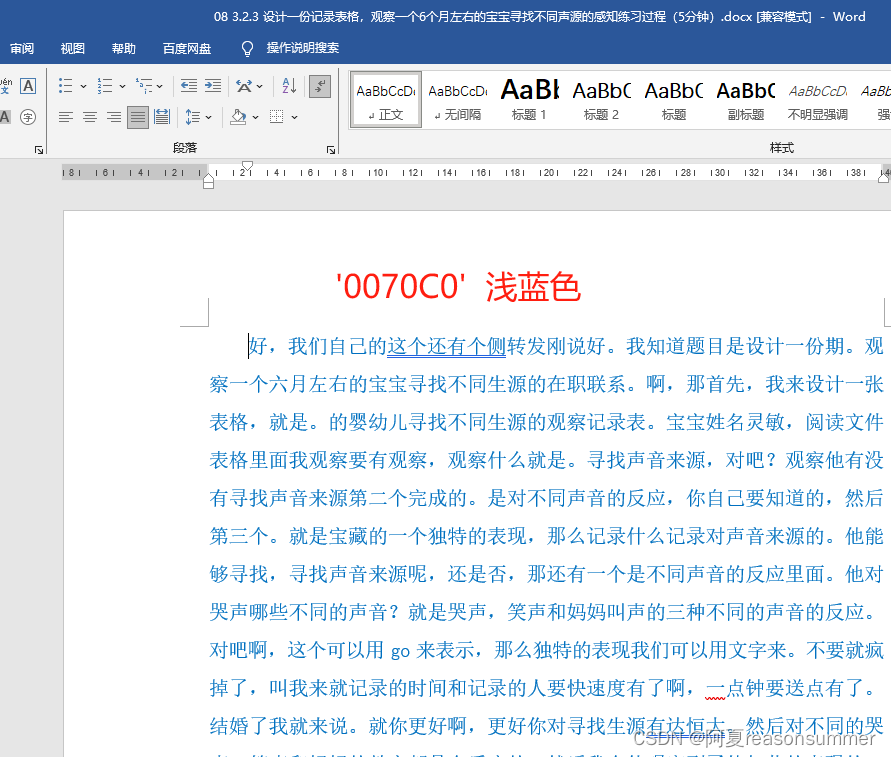文章目录
- C++基础入门
- 1.初识C++
- 1.1 第一个C++程序
- 1.2 注释
- 1.3 变量
- 1.4 常量
- 1.5 关键字
- 1.6 标识符命名规则
- 2.数据类型
- 2.1 整型
- 2.2 sizeof关键字
- 2.3 浮点型(实型)
- 2.4 字符型
- 2.5 转义字符
- 2.6 字符串型
- 2.7 布尔类型 bool
- 2.8 数据的输入
- 3.运算符
- 3.1 算术运算符
- 3.2 赋值运算符
- 3.3 比较运算符
- 3.4 逻辑运算符
- 4.程序运行结构
- 4.1 选择结构
- 4.1.1 if语句
- 4.1.2 三目运算符
- 4.1.3 switch语句
- 4.2 循环结构
- 4.2.1 while循环语句
- 4.2.2 do..while循环语句
- 4.2.3 for循环语句
- 4.2.4 嵌套循环
- 4.3 跳转语句
- 4.3.1 break语句
- 4.3.2 continue语句
- 4.3.3 goto语句
- 5.数组
- 5.1 一维数组
- 5.1.1 一维数组的定义方式
- 5.1.2 一维数组数组名
- 5.1.3 冒号排序
- 5.2 二维数组
- 5.2.1 二维数组的定义方式
- 5.2.2 二维数组的数组名
- 6.函数
- 6.1 函数的定义
- 6.2 函数的调用
- 6.3 值传递
- 6.4 函数的常见格式
- 6.5 函数声明
- 6.6 函数的分文件编写
- 7.指针
- 7.1 指针变量的定义和使用
- 7.2 指针占内存空间大小
- 7.3 空指针
- 7.4 野指针
- 7.5 const修饰指针
- 7.6 指针和数组
- 7.7 指针和函数
- 8.结构体
- 8.1 结构体的使用
- 8.2 结构体数组
- 8.3 结构体指针
- 8.4 结构体嵌套结构体
- 8.5 结构体做函数参数
- 8.6 const修饰结构体变量
C++基础入门
1.初识C++
1.1 第一个C++程序
#include <iostream>
using namespace std;int main()
{cout << "Hello World!" << endl;system("pause");return 0;
}
1.2 注释
作用:在所编写的代码中添加解释和说明,方便其他程序员阅读代码。
两种格式:
1.单行注释://描述信息//
通常放在一行代码上方,对该行代码进行注释说明。
#include <iostream>
using namespace std;int main()
{//cout << "Hello World!" << endl;system("pause");return 0;
}
2.多行注释:/* 描述信息*/
通常放在一端代码的上方,对该段代码进行整体注释说明。
#include <iostream>
using namespace std;/*int main()
{cout << "Hello World!" << endl;system("pause");return 0;
}*/
补充:编译器在编译代码时,会省略掉注释的内容。
1.3 变量
作用:给一段指定的内存空间进行命名,以便进行相应的操作。
语法结构:数据类型 变量名 = 初始值;
#include <iostream>
using namespace std;int main()
{char ch = 'a';int a = 10;float f = 3.14f;cout << ch << endl;cout << a << endl;cout << f << endl;system("pause");return 0;
}
1.4 常量
作用:用于记录程序中不可被修改的数据。
两种方式:
1.#define 宏常量
语法结构:#define 常量名 常量值
2.const 修饰的变量
语法结构:#const 数据类型 常量名 = 常量值;
#include <iostream>
using namespace std;//宏定义
#define M 10int main()
{//const修饰的变量const int a = 10;M = 20; //报错a = 30; //报错system("pause");return 0;
}
1.5 关键字
定义:预定义的保留标识符,对编译器有特殊意义。
| asm | do | if | return | typedef |
|---|---|---|---|---|
| auto | double | inline | short | typeid |
| bool | dynamic_cast | int | signed | typename |
| break | else | long | sizeof | union |
| case | enum | mutable | static | unsigned |
| catch | explicit | namespace | static_cast | using |
| char | export | new | struct | virtual |
| class | extern | operator | switch | viod |
| const | false | private | template | volatile |
| const_cast | float | protected | this | wchar_t |
| continue | for | public | throw | while |
| default | friend | register | true | |
| delete | goto | reinterpret_cast | try |
补充:在定义变量或常量时名称不可与C++的关键字相同,否则会有歧义。
1.6 标识符命名规则
-
第一个字符必须是字母(不分大小写)或者下划线(__)。
-
标识符只能由字母(不分大小写)、数字、下划线(__)组成。
-
标识符中的大小写字母有区别。
-
标识符不能是编译系统预定定义的、有特殊用途的关键字同名。
2.数据类型
说明:在创建一个变量或常量时,必须要指定相对应的数据类型,不然无法给变量或常量分配内存。不同的数据类型,开辟的内存空间大小也不同。
| 数据类型 | 占用空间 | 取值范围 |
|---|---|---|
| char | 1个字节 | [-128,127]或[0, 255] |
| unsigned char | 1个字节 | [0, 255] |
| signed char | 1个字节 | [-128,127] |
| int | 4个字节 | [-2147483648 ,2147483647] |
| unsigned int | 4个字节 | [0 , 4294967295] |
| signed int | 4个字节 | [-2147483648 , 2147483647] |
| short int | 2个字节 | [-32768 , 32767] |
| unsigned short int | 2个字节 | [0 , 65,535] |
| signed short int | 2个字节 | [-32768 , 32767] |
| long int | 8个字节 | [-9,223,372,036,854,775,808 , 9,223,372,036,854,775,807] |
| signed long int | 8个字节 | [-9,223,372,036,854,775,808 , 9,223,372,036,854,775,807] |
| unsigned long int | 8个字节 | [0 , 18,446,744,073,709,551,615] |
| float | 4个字节 | 单精度型占4个字节内存空间,7位有效数字 |
| double | 8个字节 | 双精度型占8 个字节内存空间,15~16位有效数字 |
| long long | 16个字节 | [ -9,223,372,036,854,775,807 , 9,223,372,036,854,775,807] |
| long double | 16个字节 | 长双精度型 16 个字节内存空间,18-19位有效数字。 |
| wchar_t | 2个字节或4个字节 | 1 个宽字符 |
2.1 整型
作用:整型变量表示类型为整型的数据。
| 数据类型 | 占用空间 | 取值范围 |
|---|---|---|
| short(短整型) | 2个字节 | [-32768 , 32767] |
| int(整型) | 4个字节 | [-2147483648 ,2147483647] |
| long(长整型) | 4字节(32位或8个字节(64位) | [-2147483648 ,2147483647] |
| long long(长长整型) | 8个字节 | [ -9,223,372,036,854,775,807 , 9,223,372,036,854,775,807] |
2.2 sizeof关键字
作用:可以计算数据类型所占内存空间大小。
语法结构:sizeof(数据类型 / 变量)
#include <iostream>
using namespace std;int main()
{int a = 10;cout << sizeof(a) << endl;cout << sizeof(char) << endl;cout << sizeof(short) << endl;cout << sizeof(int) << endl;cout << sizeof(float) << endl;cout << sizeof(double) << endl;cout << sizeof(long) << endl;cout << sizeof(long long) << endl;system("pause");return 0;
}
2.3 浮点型(实型)
作用:可表示有小数的数据。
两种类型:
-
单精度类型float
-
双精度类型double
区别:
| 数据类型 | 占用空间 | 有效数字范围 |
|---|---|---|
| float | 4个字节 | 7位有效数字 |
| double | 8个字节 | 15~16位有效数字 |
#include <iostream>
using namespace std;int main()
{float f = 3.14f;double d = 2.13;cout << f << endl;cout << d << endl;cout << sizeof(f) << endl;cout << sizeof(d) << endl;system("pause");return 0;
}
2.4 字符型
作用:用于显示单个字符。
语法结构:char 变量名 = ‘初始值’;
-
定义字符型变量时,要使用单引号括起来,不可使用双引号
-
字符型常量存储时不是把字符本身放入内存存储,而是将对应的ASCII编码存放入存储单元。
#include <iostream>
using namespace std;int main()
{char ch = 'a';ch = "b"; //报错system("pause");return 0;
}
ASCII码表:
大致由两部分组成:
-
ASCII非打印控制字符:0-31分配给了控制字符,用于控制打印机等一些外围设备。
-
ASCII打印字符:32-126分配给了可在键盘找到的字符。
| ASCII值 | 控制字符 | ASCII值 | 字符 | ASCII值 | 字符 | ASCII值 | 字符 |
|---|---|---|---|---|---|---|---|
| 0 | NUT | 32 | (space) | 64 | @ | 96 | 、 |
| 1 | SOH | 33 | ! | 65 | A | 97 | a |
| 2 | STX | 34 | " | 66 | B | 98 | b |
| 3 | ETX | 35 | # | 67 | C | 99 | c |
| 4 | EOT | 36 | $ | 68 | D | 100 | d |
| 5 | ENQ | 37 | % | 69 | E | 101 | e |
| 6 | ACK | 38 | & | 70 | F | 102 | f |
| 7 | BEL | 39 | , | 71 | G | 103 | g |
| 8 | BS | 40 | ( | 72 | H | 104 | h |
| 9 | HT | 41 | ) | 73 | I | 105 | i |
| 10 | LF | 42 | * | 74 | J | 106 | j |
| 11 | VT | 43 | + | 75 | K | 107 | k |
| 12 | FF | 44 | , | 76 | L | 108 | l |
| 13 | CR | 45 | - | 77 | M | 109 | m |
| 14 | SO | 46 | ’ | 78 | N | 110 | n |
| 15 | SI | 47 | / | 79 | O | 111 | o |
| 16 | DLE | 48 | 0 | 80 | P | 112 | p |
| 17 | DC1 | 49 | 1 | 81 | Q | 113 | q |
| 18 | DC2 | 50 | 2 | 82 | R | 114 | r |
| 19 | DC3 | 51 | 3 | 83 | S | 115 | s |
| 20 | DC4 | 52 | 4 | 84 | T | 116 | t |
| 21 | NAK | 53 | 5 | 85 | U | 117 | u |
| 22 | SYN | 54 | 6 | 86 | V | 118 | v |
| 23 | TB | 55 | 7 | 87 | W | 119 | w |
| 24 | CAN | 56 | 8 | 88 | X | 120 | x |
| 25 | EM | 57 | 9 | 89 | Y | 121 | y |
| 26 | SUB | 58 | : | 90 | Z | 122 | z |
| 27 | ESC | 59 | ; | 91 | [ | 123 | { |
| 28 | FS | 60 | < | 92 | / | 124 | |
| 29 | GS | 61 | = | 93 | ] | 125 | } |
| 30 | RS | 62 | > | 94 | ^ | 126 | ’ |
| 31 | US | 63 | ? | 95 | __ | 127 | DEL |
2.5 转义字符
作用:表示不能显示出来的ASCII值。
| 转义字符 | 含义 | ASCII码值(十进制) |
|---|---|---|
| \a | 警报 | 007 |
| \b | 退格(BS),将当前位置移到前一列 | 008 |
| \f | 换页(FF),将当前位置移到下一页开头 | 012 |
| \n | 换行(LF),将当前位置移到下一行开头 | 010 |
| \r | 回车(CR),将当前位置移到本行开头 | 013 |
| \t | 水平制表(HT),跳到下一个TAB位置 | 009 |
| \v | 垂直制表(VT) | 011 |
| \\ | 代表一个反斜线字符”\“ | 092 |
| ’ | 代表一个单引号字符 | 039 |
| " | 代表一个双引号字符 | 034 |
| ? | 代表一个问号 | 063 |
| \0 | 数字0 | 000 |
| \ddd | 8进制转义字符,d范围0~7 | 3位八进制 |
| \xhh | 16进制转义字符,h范围A~F | 3位十六进制 |
#include <iostream>
using namespace std;int main()
{cout << "\\" << endl;cout << "\thello\tworld" << endl;cout << "\n" << endl;system("pause");return 0;
}
2.6 字符串型
作用:用来表示一串字符。
两种形式:
1.C风格
语法结构:char 变量名[] = “字符串值”;
2.C++风格
语法结构:string 变量名 = “字符串值”;
#include <iostream>
#include <string>
using namespace std;int main()
{char ch1[] = "abcd";string ch2 = "efg";system("pause");return 0;
}
补充:
1.C风格的字符串在变量名后需要加[]。
2.C++风格的字符串,使用时需要引入头文件#include。
2.7 布尔类型 bool
作用:表示真或假的值。占用空间大小一个字节。
bool类型只有两种值:
-
true – 真(本质是1)
-
false – 假(本质是0)
#include <iostream>
using namespace std;int main()
{bool n = true;cout << n << endl;n = false;cout << n << endl;cout << sizeof(bool) << endl;system("pause");return 0;
}
2.8 数据的输入
作用:从键盘获取输入数据。
关键字:cin
语法结构:cin >> 变量
#include <iostream>
using namespace std;int main()
{int n = 0;cout << "请输入一个整型数据:" << endl;cin >> n;cout << n << endl;system("pause");return 0;
}
3.运算符
作用:用于代码的运算。
| 运算符类型 | 作用 |
|---|---|
| 算术运算符 | 处理四则运算 |
| 赋值运算符 | 将表达式的值赋值给变量 |
| 比较运算符 | 表达式的比较,并返回一个真值或假值 |
| 逻辑运算符 | 根据表达式的值返回真值或假值 |
3.1 算术运算符
作用:处理四则运算。
| 运算符 | 术语 | 举例 | 结果 |
|---|---|---|---|
| + | 正号 | +1 | 1 |
| - | 负号 | -1 | 1 |
| + | 加 | 1+1 | 2 |
| - | 减 | 1-1 | 0 |
| * | 乘 | 2*5 | 10 |
| / | 除 | 10/2 | 5 |
| % | 取模(取余) | 10%3 | 1 |
| ++ | 前置递增 | a=2;b=++a; | a=3;b=3; |
| ++ | 后置递增 | a=2;b=a++; | a=3;b=2; |
| – | 前置递减 | a=2;b=–a; | a=1;b=1; |
| – | 后置递减 | a=2;b=a–; | a=1;b=2; |
#include <iostream>
using namespace std;int main()
{int num1 = 10;int num2 = 5;cout << num1 + num2 << endl;cout << num1 - num2 << endl;cout << num1 * num2 << endl;cout << num1 / num2 << endl;int num3 = 2;int num4 = 0;cout << cout3 / cout4 << endl; //报错,除数不可为0system("pause");return 0;
}
3.2 赋值运算符
作用:将表达式的值赋值给变量。
| 运算符 | 术语 | 举例 | 结果 |
|---|---|---|---|
| = | 赋值 | a=1; | a=1; |
| += | 加等于 | a=1;a+=2; | a=3; |
| -= | 减等于 | a=1;a-=1; | a=0; |
| *= | 乘等于 | a=1;a*=3; | a=3; |
| /= | 除等于 | a=10;a/=2; | a=5; |
| %= | 模等于 | a=10;a%=3; | a=1; |
#include <iostream>
using namespace std;int main()
{int a = 10;a = 20;cout << "a=" << a << endl;a += 10;cout << "a=" << a << endl;a -= 20;cout << "a=" << a << endl;a /= 2;cout << "a=" << a << endl;a *= 2;cout << "a=" << a << endl;a %= 3;cout << "a=" << a << endl;system("pause");return 0;
}
3.3 比较运算符
作用:表达式的比较,并返回一个真值或假值。
| 运算符 | 术语 | 举例 | 结果 |
|---|---|---|---|
| == | 相等于 | 1 == 2 | 0 |
| != | 不等于 | 1 != 2 | 1 |
| < | 小于 | 1 < 2 | 1 |
| > | 大于 | 1 > 2 | 0 |
| <= | 小于等于 | 1 <= 2 | 1 |
| >= | 大于等于 | 1 >= 2 | 0 |
#include <iostream>
using namespace std;int main()
{int a = 1;int b = 2;cout << (a == b) << endl;cout << (a != b) << endl;cout << (a < b) << endl;cout << (a > b) << endl;cout << (a <= b) << endl;cout << (a >= b) << endl;system("pause");return 0;
}
3.4 逻辑运算符
作用:根据表达式的值返回真值或假值。
| 运算符 | 术语 | 举例 | 结果 |
|---|---|---|---|
| ! | 非 | !a | a为假,结果为真;a为真,结果为假 |
| && | 与 | a&&b | 全1出1,有0出0(1:真 0:假) |
| | | 或 | a| |
#include <iostream>
using namespace std;int main()
{int a = 1;int b = 2;cout << !a << endl;cout << !!a << endl;cout << (a && b) << endl;cout << (a || b) << endl;system("pause");return 0;
}
4.程序运行结构
-
顺序结构:程序按顺序执行,不发生跳转
-
选择结构:判断条件是否满足,选择性区执行相应的代码
-
循环结构:判断条件是否满足,循环多次执行某段代码
4.1 选择结构
4.1.1 if语句
作用:执行满足条件的语句。
三种形式:
-
单行格式if语句
-
多行格式if语句
-
多条件格式if语句
#include <iostream>
using namespace std;//单行if语句
int main()
{int score = 0;cout << "请输入你的成绩:" << endl;cin >> score;if (score >= 60){cout << "及格!" << endl;}system("pause");return 0;
}
//多行if语句
int main()
{int score = 0;cout << "请输入你的成绩:" << endl;cin >> score;if (score >= 80){cout << "良好!" << endl;}else if (score >= 60){cout << "及格!" << endl;}else{cout << "不及格!" << endl;}system("pause");return 0;
}
//多条件if语句
int main()
{int score = 0;cout << "请输入你的成绩:" << endl;cin >> score;if (score >= 80){if (score >= 90)cout << "优秀!" << endl;elsecout << "良好!" << endl;}else if (score >= 60){cout << "及格!" << endl;}else{cout << "不及格!" << endl;}system("pause");return 0;
}
4.1.2 三目运算符
作用:通过三目运算实现简单的判断。
语法结构:表达式1 ? 表达式2:表达式3
说明:
如果表达式1的值为真,执行表达式2,并返回表达式2执行后的结果。
如果表达式1的值为假,执行表达式3,并返回表达式3执行后的结果。
#include <iostream>
using namespace std;int main()
{int a = 10;int b = 2;int c = 0;c = a > b ? a : b;cout << c << endl;(a > b ? a : b) = 5; //在C++中三目运算符返回的是变量,可以继续进行赋值操作。cout << a << endl;system("pause");return 0;
}
4.1.3 switch语句
作用:执行多条件分支语句
语法结构:
switch(表达式)
{case 常量表达式1: 语句1;break;case 常量表达式2: 语句2;break; 'case 常量表达式n: 语句n;break;......default: 语句n+1;
}
#include <iostream>
using namespace std;int main()
{int day = 0;cin >> day;switch (day){case 1:cout << "星期一" << endl;break;case 2:cout << "星期二" << endl;break;case 3:cout << "星期三" << endl;break;case 4:cout << "星期四" << endl;break;case 5:cout << "星期五" << endl;break;case 6:cout << "星期六" << endl;break;case 7:cout << "星期天" << endl;break;default:cout << "输入错误!" << endl;break;}system("pause");return 0;
}
补充:case中如果没有break,程序将会一直向下执行。
4.2 循环结构
4.2.1 while循环语句
作用:满足条件,执行语句。
语法结构:while(循环条件) {循环语句}
说明:只要循环条件的结果为真,就执行循环语句。
#include <iostream>
using namespace std;int main()
{int num = 1;while (num <= 10){cout << num << endl;num++;}system("pause");return 0;
}
4.2.2 do…while循环语句
作用:满足条件,执行语句。
语法结构:do{循环语句} while(循环条件);
#include <iostream>
using namespace std;int main()
{int num = 1;do{cout << num << endl;num++;} while (num <= 10);system("pause");return 0;
}
补充:do…while与while的区别就是会先执行一次循环语句,再判断循环条件。
4.2.3 for循环语句
作用:满足条件,执行语句。
语法结构:for(表达式1;表达式2;表达式3){循环体语句;}
表达式1:
表达式1为初始化部分,用来进行循环变量赋值。
表达式2:
表达式2为条件判断部分,用来控制循环条件。
表达式3:
表达式3为调整部分,用来控制循环变量递增或递减。
#include <iostream>
using namespace std;int main()
{int i = 0;for (i = 1; i <= 10; i++){cout << i << endl;}system("pause");return 0;
}
4.2.4 嵌套循环
作用:在循环体中再嵌套一层循环,解决实际问题。
例如:打印一个10 x 10的矩形,就需要用到嵌套循环。
#include <iostream>
using namespace std;int main()
{int i = 0;int j = 0;for (i = 0; i < 10; i++){for (j = 0; j < 10 ; j++){cout << "* ";}cout << endl;}system("pause");return 0;
}
4.3 跳转语句
4.3.1 break语句
作用:跳出选择结构或循环结构。
常用:
-
在switch条件语句中,终止case跳出switch
-
在循环语句中,跳出当前循环语句
-
在嵌套循环中,跳出最近的内存循环语句
//switch条件语句
#include <iostream>
using namespace std;int main()
{int day = 0;cin >> day;switch (day){case 1:case 2:case 3:case 4:case 5:cout << "工作日" << endl;break;case 6:case 7:cout << "休息日" << endl;break;default:cout << "error" << endl;break;}system("pause");return 0;
}
//循环语句
#include <iostream>
using namespace std;int main()
{for (int i = 1; i <= 10; i++){if (i == 5)break;cout << i << endl;}system("pause");return 0;
}
//嵌套循环
#include <iostream>
using namespace std;int main()
{for (int i = 0; i < 10; i++){for (int j = 0; j < 10; j++){if (j == 5)break;cout << "* ";}cout << endl;}system("pause");return 0;
}
4.3.2 continue语句
作用:在循环语句中,跳过本次循环中尚未执行的部分,执行下一次的循环。
#include <iostream>
using namespace std;int main()
{for (int i = 1; i <= 10; i++){if (i == 5)continue;cout << i << endl;}system("pause");return 0;
}
4.3.3 goto语句
作用:如果标记的名称存在,程序执行到goto语句时,将会跳转到标记的位置执行。
语法结构:goto 标记;
#include <iostream>
using namespace std;int main()
{for (int i = 1; i <= 10; i++){if (i == 5)goto end;cout << i << endl;}
end:cout << "结束" << endl;system("pause");return 0;
}
5.数组
定义:数组就是一组存放相同类型的数据元素的集合,由连续的内存位置组成。
5.1 一维数组
5.1.1 一维数组的定义方式
三种方式:
-
数据类型 数组名[数组长度];
-
数据类型 数组名[数组长度] = {值1,值2,…值n};
-
数据类型 数组名[] = {值1,值2,…值n};
#include <iostream>
using namespace std;int main()
{int arr1[5];int arr2[5] = { 10,20,30,40,50 };int arr3[] = { 60,70,80,90,100 };//赋值arr1[0] = 5;arr1[1] = 15;arr1[2] = 25;arr1[3] = 35;arr1[4] = 45;//输出cout << arr1[0] << endl;cout << arr1[1] << endl;cout << arr1[2] << endl;cout << arr1[3] << endl;cout << arr1[4] << endl;//输出 for (int i = 0; i < 5; i++){cout << arr2[i] << endl;}system("pause");return 0;
}
5.1.2 一维数组数组名
作用:统计整个数组在内存中的长度,获取数组在内存中的首地址。
#include <iostream>
using namespace std;int main()
{int arr[10] = { 1,2,3,4,5,6,7,8,9,10 };cout << "数组在内存中的大小为:" << sizeof(arr) << endl;cout << "数组中每个元素在内存所占空间大小为:" << sizeof(arr[0]) << endl;cout << "数组的元素个数为:" << sizeof(arr) / sizeof arr[0] << endl;cout << "数组首元素地址为:" << arr << endl;cout << "数组第一个元素地址为:" << &arr[0] << endl;cout << "数组第二个元素地址为:" << &arr[1] << endl;arr = 10; //报错,数组名是常量不可进行赋值。system("pause");return 0;
}
5.1.3 冒号排序
作用:对数组内元素进行排序。
#include <iostream>
using namespace std;int main()
{int arr[] = { 3,5,8,2,7,9,6,4 };int len = sizeof(arr) / sizeof(arr[0]);for (int i = 0; i < len - 1; i++){for (int j = 0; j < len - i - 1; j++){if (arr[j] > arr[j + 1]){int temp = arr[j];arr[j] = arr[j + 1];arr[j + 1] = temp;}}}for (int i = 0; i < len; i++){cout << arr[i] << " ";}cout << endl;system("pause");return 0;
}
5.2 二维数组
定义:就是一个有行和列的矩阵,每一行代表一个数组。
5.2.1 二维数组的定义方式
4种方式:
-
数据类型 数组名 [行数][列数];
-
数据类型 数组名 [行数][列数] = { {值1, 值2}, {值3, 值4}};
-
数据类型 数组名 [行数][列数] = { 值1, 值2, 值3, 值4};
-
数据类型 数组名 [ ][列数] = { 值1, 值2, 值3, 值4};
#include <iostream>
using namespace std;int main()
{int arr1[3][3];int arr2[3][3] = { {1,2,3},{4,5,6},{7,8,9} };int arr3[3][3] = { 10,11,12,13,14,15,16,17,18 };int arr4[][3] = { 19,20,21,22,23,24,25,26,27 };for (int i = 0; i < 3; i++){for (int j = 0; j < 3; j++){cout << arr2[i][j] << " ";}cout << endl;}system("pause");return 0;
}
5.2.2 二维数组的数组名
作用:查看二维数组所占内存空间大小,获取二维数组首地址。
#include <iostream>
using namespace std;int main()
{int arr[3][3] = { 1,2,3,4,5,6,7,8,9 };cout << "数组在内存中的大小为:" << sizeof(arr) << endl;cout << "数组中每个元素在内存所占空间大小为:" << sizeof(arr[0][0]) << endl;cout << "数组的元素个数为:" << sizeof(arr) / sizeof arr[0][0] << endl;cout << "数组首元素地址为:" << arr << endl;cout << "数组第一个元素地址为:" << &arr[0][0] << endl;cout << "数组第二个元素地址为:" << &arr[0][1] << endl;system("pause");return 0;
}
6.函数
作用:将一段经常使用的代码封装起来,减少重复的代码。
6.1 函数的定义
语法结构:
返回值类型 函数名(参数列表)
{函数体语句return表达式
}
#include <iostream>
using namespace std;int add(int num1, int num2)
{return num1 + num2;
}int main()
{int num1 = 10;int num2 = 20;int ret = add(num1, num2);cout << ret << endl;system("pause");return 0;
}6.2 函数的调用
作用:使用定义好的函数。
语法结构:函数名(参数)
#include <iostream>
using namespace std;int Sub(int num1, int num2) //这边的num1,num2为形参
{return num1 - num2;
}int main()
{int n1 = 10;int n2 = 20;//调用Sub函数int ret = Sub(n1, n2); //这边的n1,n2为实参cout << ret << endl;system("pause");return 0;
}
6.3 值传递
作用:函数调用时将数值传入形参。
#include <iostream>
using namespace std;void swap(int num1, int num2)
{int temp = num1;num1 = num2;num2 = temp;cout << num1 << endl;cout << num2 << endl;
}
int main()
{int x = 10;int y = 20;swap(x, y);cout << x << endl;cout << y << endl;system("pause");return 0;
}
补充:形参发生,不会影响实参。
6.4 函数的常见格式
常见的函数格式有4种:
-
无参无返
-
有参无返
-
无参有返
-
有参有返
#include <iostream>
using namespace std;//无参无返
void test()
{cout << "hello world" << endl;
}//有参无返
void test2(int a)
{cout << "this is test" << endl;
}//无参有返
int test3()
{return 1;
}//有参有返
int test4(int a)
{a += 2;return a;
}
6.5 函数声明
作用:告诉便编译器函数名称以及如何调用函数。
#include <iostream>
using namespace std;//声明
int max(int x, int y);
int max(int x, int y);
int max(int x, int y);//定义
int max(int x, int y)
{return x > y ? x : y;
}
int main()
{int a = 10;int b = 20; int c = max(a, b);cout << c << endl;system("pause");return 0;
}补充:函数声明可多次,但定义只可一次。
6.6 函数的分文件编写
作用:让代码结构更清晰。
一般有4个步骤:
-
创建后缀名为.h的头文件
-
创建后缀名为.cpp的源文件
-
头文件写函数的声明
-
源文件写函数的定义
//main.cpp
#include "swap.h"int main()
{int a = 10;int b = 20;swap(a, b);system("pause");return 0;
}
//swap.h
#include <iostream>
using namespace std;void swap(int x, int y);
//swap.cpp
#include "swap.h"void swap(int x, int y)
{int temp = x;x = y;y = temp;cout << x << endl;cout << y << endl;
}
7.指针
作用:可通过指针间接访问内存。
7.1 指针变量的定义和使用
语法结构: 数据类型 * 变量名;
#include <iostream>
using namespace std;int main()
{int a = 10;int* p = &a;cout << "a的地址为:" << &a << endl;cout << "指针p的地址为:" << p << endl;*p = 20;cout << "a的值为:" << a << endl;cout << "指针p的值为:" << *p << endl;system("pause");return 0;
}eturn 0;
}
7.2 指针占内存空间大小
大小:在32位操作系统下占4个字节,64位操作系统下占8个字节。
#include <iostream>
using namespace std;int main()
{int a = 10;int* p = &a;cout << sizeof(p) << endl;cout << sizeof(char*) << endl;cout << sizeof(float *) << endl;cout << sizeof(double *) << endl;//都是4个字节system("pause");return 0;
}
7.3 空指针
定义:指针变量指向内存编号为0的空间。
作用:初始化指针变量。
#include <iostream>
using namespace std;int main()
{int* p = NULL;*p = 100; //报错,内存编号0-255系统占用,不许用户进行访问cout << *p << endl;system("pause");return 0;
}补充:空指针指向的内存不可访问。
7.4 野指针
定义:指针变量指向非法的内存空间。
#include <iostream>
using namespace std;int main()
{int* p = (int*)0x1234;cout << *p << endl;system("pause");return 0;
}
7.5 const修饰指针
三种形式:
-
修饰指针 — 常量指针
-
修饰常量 — 指针常量
-
修饰指针与常量
#include <iostream>
using namespace std;int main()
{int a = 10;int b = 20;//const修饰的是指针,指针所指向的地址的内容不可改,指针指向的地址可以改const int* p1 = &a; *p1 = 20; //报错p1 = &b;//const修饰的是常量,指针所指向的地址的内容可改,指针指向的地址不可改int* const p2 = &a;*p2 = 20; p2 = &b; //报错//const修饰的是常量与指针,指针所指向的地址的内容不可改,指针指向的地址不可改const int* const p3 = &a;*p3 = 20; //报错p3 = &b; //报错system("pause");return 0;
}7.6 指针和数组
作用:用指针访问数组元素。
#include <iostream>
using namespace std;int main()
{int arr[] = { 1,2,3,4,5,6,7,8,9,10 };int len = sizeof(arr) / sizeof(arr[0]);int* p = arr;cout << "数组arr的第一个元素为:" << arr[0] << endl;cout << "指针p访问的第一个元素为:" << *p << endl;for (int i = 0; i < len; i++){cout << *(p + i) << endl; //使用指针遍历数组}system("pause");return 0;
}7.7 指针和函数
作用:指针作为函数参数,可以修改实参的值。
#include <iostream>
using namespace std;void swap(int* num1, int* num2)
{int temp = *num1;*num1 = *num2;*num2 = temp;
}int main()
{int a = 10;int b = 20;cout << "before:" << endl;cout << a << endl;cout << b << endl;swap(&a, &b);cout << "after:" << endl;cout << a << endl;cout << b << endl;system("pause");return 0;
}8.结构体
定义:一系列有相同类型或不同类型的数据构成的数据集合。
8.1 结构体的使用
语法结构:struct 结构体名 {结构体成员列表};
结构体创建变量的三种方式:
-
struct 结构体名 变量名
-
struct 结构体名 变量名 = {成员1, 成员2, …成员n};
-
{}变量名;
#include <iostream>
#include <string>
using namespace std;struct Student
{int id;string name;int age;
}stu1;int main()
{struct Student stu2;struct Student stu3 = { 123456,"小明",20 };stu2.id = 123457;stu2.name = "小红";stu2.age = 18;cout << "学号:" << stu2.id << " " << "姓名:" << stu2.name << " " << "年龄:" << stu2.age << endl;system("pause");return 0;
}
8.2 结构体数组
作用:把自定义的结构体放入数组中方便后期维护。
语法结构:struct 结构体名 数组名[元素个数] = { {}, {}…{}};
#include <iostream>
#include <string>
using namespace std;struct Student
{int id;string name;int age;
};int main()
{struct Student stu[3] = { {123456,"A",18},{123457,"B",20},{123458,"C",19} };stu[1].age = 22;stu[1].id = 123459;stu[1].name = "D";for (int i = 0; i < 3; i++){cout << "学号:" << stu[i].id << " " << "姓名" << stu[i].name << " " << "年龄:" << stu[i].age << endl;}system("pause");return 0;
}
8.3 结构体指针
作用:通过指针访问结构体中的成员。
#include <iostream>
#include <string>
using namespace std;struct Student
{int id;string name;int age;
};int main()
{struct Student stu = { 123456,"小明",20 };struct Student* p = &stu;cout << "学号:" << p->id << " " << "姓名:" << p->name << " " << "年龄:" << p->age << endl;system("pause");return 0;
}8.4 结构体嵌套结构体
作用:结构中的成员可以是另一个结构体。
#include <iostream>
#include <string>
using namespace std;struct Student
{int id;string name;int age;
};struct Teacher
{string name;int age;struct Student stu;
};
int main()
{struct Teacher teacher = { "E",26,{123456,"A",19} };struct Teacher* p = &teacher;cout << "老师姓名:" << p->name << " " << "老师年龄:" << p->age << endl;cout << "学生学号:" << p->stu.id << " " << "学生姓名:" << p->stu.name << " " << "学生年龄:" << p->stu.age << endl;system("pause");return 0;
}
8.5 结构体做函数参数
作用:把结构体作为参数向函数传入。
两种传递方式:
-
值传递
-
地址传递
#include <iostream>
#include <string>
using namespace std;struct Student
{int id;string name;int age;
};//值传递
void print1(struct Student stu)
{cout << "学号:" << stu.id << " " << "姓名" << stu.name << " " << "年龄:" << stu.age << endl;
}//地址传递
void print2(struct Student* stu)
{cout << "学号:" << stu->id << " " << "姓名" << stu->name << " " << "年龄:" << stu->age << endl;
}int main()
{struct Student stu = { 123456,"A",18 };print1(stu);print2(&stu);system("pause");return 0;
}
8.6 const修饰结构体变量
作用:防止误操作。
#include <iostream>
#include <string>
using namespace std;struct Student
{int id;string name;int age;
};void print(const Student* stu)
{stu->age = 50; //报错cout << "学号:" << stu->id << " " << "姓名" << stu->name << " " << "年龄:" << stu->age << endl;
}int main()
{struct Student stu = { 123456,"A",18 };print(&stu);system("pause");return 0;
}




